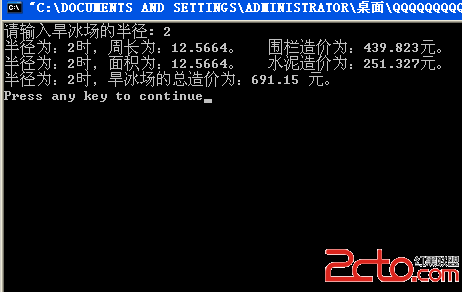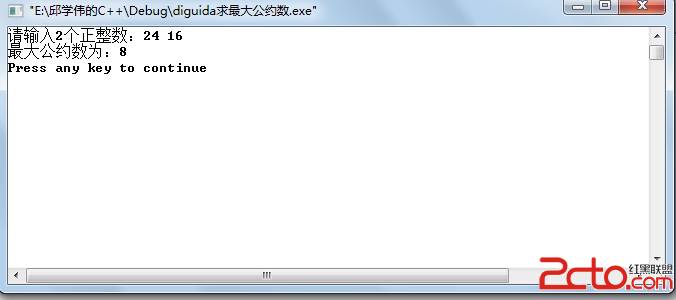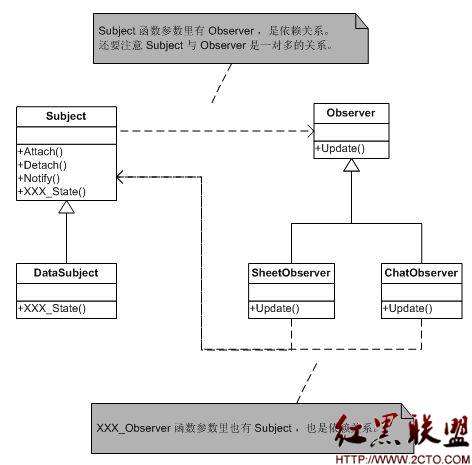NSDateFormatter 格式整理
[formattersetLocale:[[[NSLocale alloc]initWithLocaleIdentifier:@"en_US"][formatter setAMSymbol:@"AM"];
[formattersetPMSymbol:@"PM"];
autorelease]];
yyyy 4位年
MM 月
d~dd 日
hh 时
HH 24小时
mm 分
ss 秒
a~aaa AM/PM
EEE 英文星期
MMM 英文月
Z~ZZZ 时区
ZZZZ
K
G~GGG AD
a: AM/PM (上午/下午)
A: 0~86399999 (一天的第A微秒)
c/cc: 1~7 (一周的第一天, 周天为1)
ccc: Sun/Mon/Tue/Wed/Thu/Fri/Sat (星期几简写)
cccc: Sunday/Monday/Tuesday/Wednesday/Thursday/Friday/Saturday(星期几全拼)
d: 1~31 (月份的第几天, 带0)
D: 1~366 (年份的第几天,带0)
e: 1~7 (一周的第几天, 带0)
E~EEE: Sun/Mon/Tue/Wed/Thu/Fri/Sat (星期几简写)
EEEE: Sunday/Monday/Tuesday/Wednesday/Thursday/Friday/Saturday(星期几全拼)
F: 1~5 (每月的第几周, 一周的第一天为周一)
g: Julian Day Number (number of days since 4713 BC January 1)未知
G~GGG: BC/AD (Era Designator Abbreviated) 未知
GGGG: Before Christ/Anno Domini 未知
h: 1~12 (0 padded Hour (12hr)) 带0的时, 12小时制
H: 0~23 (0 padded Hour (24hr)) 带0的时, 24小时制
k: 1~24 (0 padded Hour (24hr) 带0的时, 24小时制
K: 0~11 (0 padded Hour (12hr)) 带0的时, 12小时制
L/LL: 1~12 (0 padded Month) 第几月
LLL: Jan/Feb/Mar/Apr/May/Jun/Jul/Aug/Sep/Oct/Nov/Dec 月份简写
LLLL:January/February/March/April/May/June/July/August/September/October/November/December月份全称
m: 0~59 (0 padded Minute) 分钟
M/MM: 1~12 (0 padded Month) 第几月
MMM: Jan/Feb/Mar/Apr/May/Jun/Jul/Aug/Sep/Oct/Nov/Dec
MMMM:January/February/March/April/May/June/July/August/September/October/November/December
q/qq: 1~4 (0 padded Quarter) 第几季度
qqq: Q1/Q2/Q3/Q4 季度简写
qqqq: 1st quarter/2nd quarter/3rd quarter/4th quarter 季度全拼
Q/QQ: 1~4 (0 padded Quarter) 同小写
QQQ: Q1/Q2/Q3/Q4 同小写
QQQQ: 1st quarter/2nd quarter/3rd quarter/4th quarter 同小写
s: 0~59 (0 padded Second) 秒数
S: (rounded Sub-Second) 未知
u: (0 padded Year) 未知
v~vvv: (General GMT Timezone Abbreviation) 常规GMT时区的编写
vvvv: (General GMT Timezone Name) 常规GMT时区的名称
w: 1~53 (0 padded Week of Year, 1st day of week = Sunday, NB:1st week of year starts from the last Sunday of last year) 一年的第几周,一周的开始为周日,第一周从去年的最后一个周日起算
W: 1~5 (0 padded Week of Month, 1st day of week = Sunday)一个月的第几周
y/yyyy: (Full Year) 完整的年份
yy/yyy: (2 Digits Year) 2个数字的年份
Y/YYYY: (Full Year, starting from the Sunday of the 1st week ofyear) 这个年份未知干嘛用的
YY/YYY: (2 Digits Year, starting from the Sunday of the 1st weekof year) 这个年份未知干嘛用的
z~zzz: (Specific GMT Timezone Abbreviation) 指定GMT时区的编写
zzzz: (Specific GMT Timezone Name) Z: +0000 (RFC 822 Timezone)指定GMT时区的名称
Date Field SymbolTable
Field Sym. No. Example Description
era G 1..3 AD Era -Replaced with the Era string for the current date. One to threeletters for the abbreviated form, four letters for the long form,five for the narrow form.
4 Anno Domini
5 A
year y 1..n 1996 Year. Normally the length specifies the padding, but for twoletters it also specifies the maximum length. Example:
Year y yy yyy yyyy yyyyy
AD 1 1 01 001 0001 00001
AD 12 12 12 012 0012 00012
AD 123 123 23 123 0123 00123
AD 1234 1234 34 1234 1234 01234
AD 12345 12345 45 12345 12345 12345
Y 1..n 1997 Year (of "Week of Year"), used in ISO year-week calendar. Maydiffer from calendar year.
u 1..n 4601 Extended year. This is a single number designating the year ofthis calendar system, encompassing all supra-year fields. Forexample, for the Julian calendar system, year numbers are positive,with an era of BCE or CE. An extended year value for the Juliancalendar system assigns positive values to CE years and negativevalues to BCE years, with 1 BCE being year 0.
quarter Q 1..2 02 Quarter - Use one or two for the numerical quarter, three for theabbreviation, or four for the full name.
3 Q2
4 2nd quarter
q 1..2 02 Stand-Alone Quarter - Use one or two for the numericalquarter, three for the abbreviation, or four for the fullname.
3 Q2
4 2nd quarter
month M 1..2 09 Month- Use one or two for the numerical month, three for theabbreviation, or four for the full name, or five for the narrowname.
3 Sept
4 September
5 S
L 1..2 09 Stand-Alone Month - Use one or two for the numerical month,three for the abbreviation, or four for the full name, or 5 for thenarrow name.
3 Sept
4 September
5 S
week w 1..2 27 Week of Year.
W 1 3 Week of Month
day d 1..2 1 Date - Day of the month
D 1..3 345 Day of year
F 1 2
Day of Week in Month. The example is for the 2nd Wed inJuly
g 1..n 2451334 Modified Julian day. This is different from the conventionalJulian day number in two regards. First, it demarcates days atlocal zone midnight, rather than noon GMT. Second, it is a localnumber; that is, it depends on the local time zone. It can bethought of as a single number that encompasses all the date-relatedfields.
week
day E 1..3 Tues Dayof week - Use one through three letters for the short day, or fourfor the full name, or five for the narrow name.
4 Tuesday
5 T
e 1..2 2 Localday of week. Same as E except adds a numeric value that will dependon the local starting day of the week, using one or two letters.For this example, Monday is the first day of the week.
3 Tues
4 Tuesday
5 T
c 1 2 Stand-Alone local day of week - Use one letter for the localnumeric value (same as 'e'), three for the short day, or four forthe full name, or five for the narrow name.
3 Tues
4 Tuesday
5 T
period a 1 AM AM or PM
hour h 1..2 11 Hour [1-12].
H 1..2 13 Hour [0-23].
K 1..2 0 Hour [0-11].
k 1..2 24 Hour [1-24].
minute m 1..2 59 Minute. Use one or two for zero padding.
second s 1..2 12 Second. Use one or two for zero padding.
S 1..n 3457 Fractional Second - rounds to the count of letters. (example isfor 12.34567)
A 1..n 69540000 Milliseconds in day. This field behaves exactly like acomposite of all time-related fields, not including the zonefields. As such, it also reflects discontinuities of those fieldson DST transition days. On a day of DST onset, it will jumpforward. On a day of DST cessation, it will jump backward. Thisreflects the fact that is must be combined with the offset field toobtain a unique local time value.
zone z 1..3 PDT Timezone - Use one to three letters for the short timezone or fourfor the full name. For more information, see AppendixJ: Time Zone Display Names
4 Pacific DaylightTime
Z 1..3 -0800 Useone to three letters for RFC 822, four letters for GMT format.
4 GMT-08:00
v 1 PT Useone letter for short wall (generic) time, four for long wall time.For more information, see AppendixJ: Time Zone Display Names
4 Pacific Time
All non-letter character represent them
补充:软件开发 , C++ ,- 更多C/C++疑问解答:
- 关于c++的cout输出的问题。
- 在学校里学过C和C++,不过学的很一般,现在自学C#,会不会很难?
- 全国计算机二级C语言笔试题
- 已知某树有2个2度结点,3个3度结点,4个4度结点,问有几个叶子结点?
- c++数据结构内部排序问题,整数排序
- 2012九月计算机二级C语言全国题库,,急求急求
- 如果assert只有一个字符串作为参数,是什么意思呢?
- C语言中,哪些运算符具有左结合性,哪些具有右结合性,帮忙总结下,谢谢了!
- 为什么用结构体编写的程序输入是,0输不出来啊~~~
- 将IEEE—754的十六进制转化为十进制浮点类型,用C或C++都行,多谢各位大侠啊,非常感谢!
- 为什么这个程序求不出公式?
- 这个链表倒置的算法请大家分析下
- c语言函数库调用
- C语言unsigned int纠错
- C语言快排求解啊





